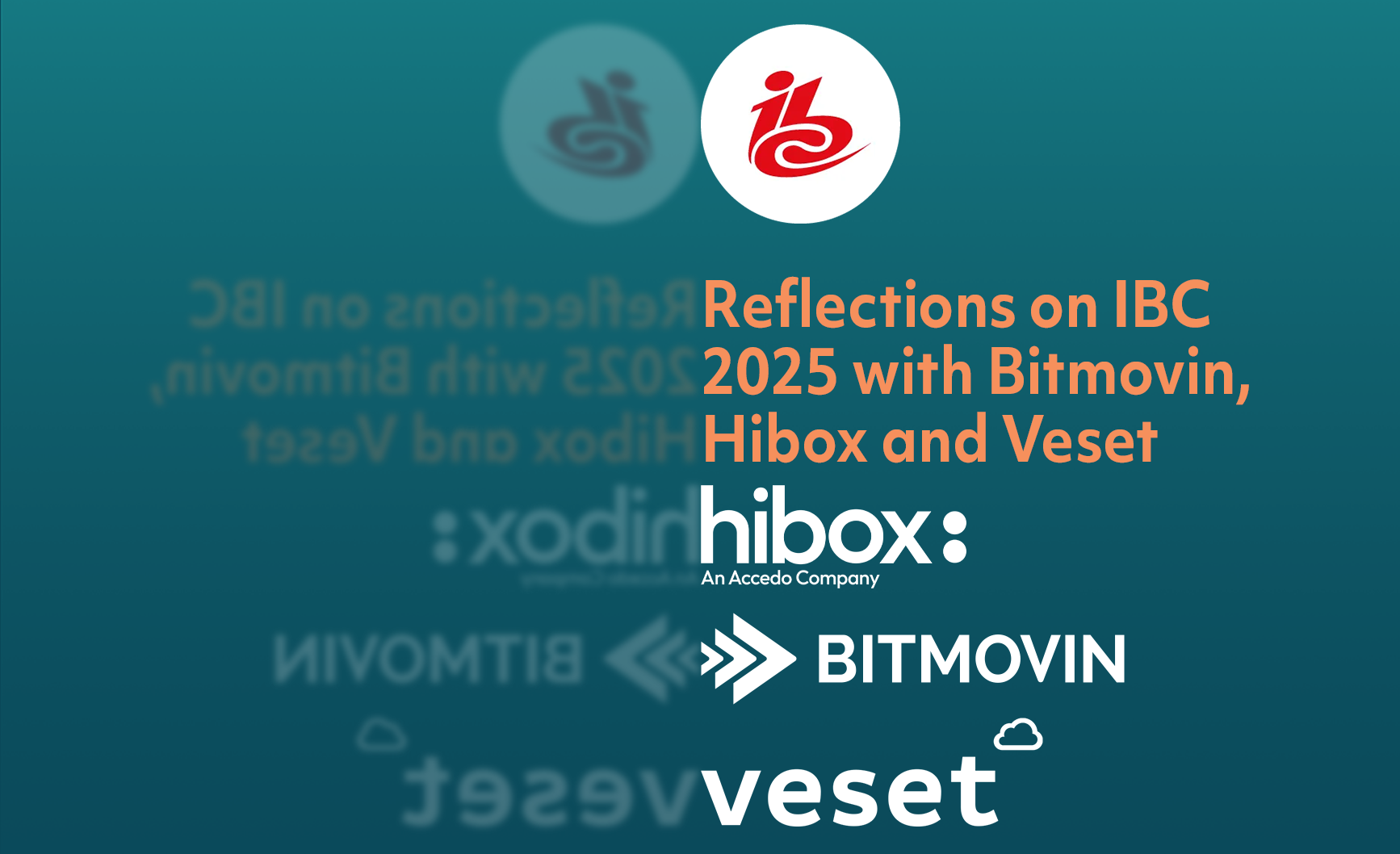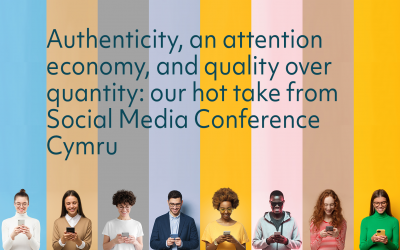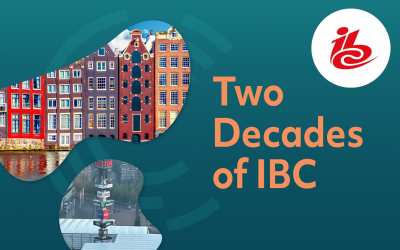IBC has passed in the same whirlwind of back-to-back meetings, demos and networking events as always. It’s such a frenetic couple of days that it’s often only once people get home and have a chance to collect their thoughts that they can reflect on what they saw and experienced at the show. For our latest Radical Moves Broadcast Unscripted Podcast, I sat down with Rasmus Almqvist, VP of Global Sales at Hibox (part of the Accedo Group), Martins Magone, CTO at Veset, and Igor Oreper, Chief Strategy Officer at Bitmovin, to take a moment out to reflect on the biggest standout trends from IBC this year.
AI Moves Beyond the Hype

Helen Weedon
Managing Director, Radical Moves Ltd
There’s been a lot of AI hype at IBC over the last few years, but this year, the consensus seems to be that it’s starting to mature beyond the hype. Igor remarked people weren’t asking what AI is anymore, but rather were asking, what can it actually do for me? From real-time sports highlight creation, automated commentary and smarter metadata tagging to improving search and discovery, AI demos were aplenty on the show floor. He felt there was also less marketing centred around AI, and more around terms like smart and intelligent. That said, Martins feels that while there are some practical AI applications out there, there still seems to be a lack of real breakthroughs for broadcast-specific use cases. He thinks that these may still be a few years away unless the underlying models take a big leap forward. Still, he agreed that the hype has calmed, and more grounded use cases are beginning to emerge.
Rasmus added that: “AI has gone from something that’s incredibly hyped up to something that’s embedded into existing tools, more like an assistant”. He went on to say that at the Accedo stand, nearly every visitor wanted to talk about AI, with some having some very “outlandish thoughts and ideas” about what AI could do for them. He feels the industry’s still got some way to go when it comes to crystallising and articulating how AI can actually be embedded into tools, or how AI can help someone do their work better. There was agreement across the panel that the fear that AI will cause widespread job loss in the industry seems to have abated. Igor feels that it’s now being viewed more as a tool for increasing productivity and improving return on investment rather than something negative.
Agentic AI where AI agents not just analysing the data but also acting on it, was also mentioned, with Igor noting that there are some really interesting Agentic AI use cases that are very applicable to the media space. He went on to add that the pace of innovation on this front is so fast, that there’ll be a huge amount of development over the next year. While Martins sees it taking longer than a year, he agreed that sooner or later we will get to the point where we have true agentic operators in place making the decisions.
Also touched on during the podcast, was how AI and data will likely combine to enhance XR experiences. Rasmus described how the AR glasses showcased at the Accedo stand at IBC layered live sports with real-time stats such as who passed the ball, and how far and fast a player ran. This gives fans a new way to see the game, which may also help to attracting new audiences.
Smarter, More Creative Monetisation
Igor noted that as a result of economic pressure, revenue maximisation is a top priority for the industry currently and as was evident on the show floor, this is leading to a lot of innovation around adtech. This innovation is helping to deliver the viewer a more viewer centric ad experience, that is also less disruptive, with things like server guided ad insertion, personalised ads, and new and engaging ad formats like Picture-in-Picture, L-bands and side-by-sides. Despite this innovation on the ad front, there’s still a place for traditional scheduled ads. Martins gave the example of a European broadcaster who said that despite all the shiny new ad tech, most broadcasters still lean heavily on traditional scheduled ads which still make up over half of the total ad market. Having said that, there’s clearly a lot of regional variation because as noted by Igor, dynamic ad insertion is already quite commonplace in the US.
Rasmus brought in a different angle altogether, with a perspective from the hospitality sector. He explained how hotels generate roughly 65% of their revenue from the actual renting of the room so are continually trying to drive secondary spend, such as restaurant spend, drinks, and spa bookings. The challenge, he said, is how to use in-room entertainment to drive behavioural change so guests spend more while staying at the hotel. One example could be to combine things like QR codes and on-screen promotions with actual content being surfaced.
Igor saw this as the perfect use case for contextual advertising and gave the example of how a guest could be watching a movie, and if there’s a scene at a restaurant, a contextual ad for the restaurant at the hotel, could be displayed alongside the content, perhaps even featuring a specific promotion. While still in its infancy, as Martins noted, AI could well be used to generate these kinds of ads in future. Igor added to this saying that there are some media companies out there that are using AI-driven production for short form content advertising.
Cloud Conversation has Shifted
Also discussed was the changing conversation around cloud adoption. A few years ago, there was a lot of drive towards full-cloud adoption, but as Martins noted, although the move to the cloud is still progressing, the focus has shifted from full cloud to a mixed on-prem/cloud approach. Igor agreed with this and added that for many, the often spiralling and unpredictable costs of full cloud are a real pain point. He described how many companies are opting to slow down their transition to the cloud and continue with on-prem longer than expected.
As noted by Igor, this highlights the need for a stronger focus on FinOps so that media companies and broadcasters can be better at tracking, managing and containing their spend in cloud in a way that really helps to speed up that adoption going forward.
If the early promise of cloud was about flexibility, efficiency and scale with full-cloud adoption, the next chapter seems to be about moderation and measurement, with a focus on developing tools to leverage the cloud without losing sight of the bottom line.
Looking Ahead to NAB
As for what we might expect to see at NAB, predictions circled back to familiar ground, with AI being front and centre. Rasmus anticipates more data-driven features, even the possibility of broadcasters and AI companies coming together to launch AI-driven commentary services based on the live events happening on the pitch, all layered onto sports subscriptions.
Martins said it depends on how quickly new AI models develop, but he expects that as these become more powerful, faster and smarter, we’ll likely see some new use cases on show at NAB. Igor agrees that AI is likely to be a key focus once again, and give the speed of change, thinks we may see more Agentic AI use cases. Additionally, building on the discussion about managing operational costs in the cloud, Igor also expects there to be a stronger focus on cloud FinOps at NAB.
The sense I got from the conversation was that the industry is moving past the buzzwords that have dominated the last few years. AI isn’t just something you can slap on a product to make it sound current because people can see straight through that, so it doesn’t work. It’s only relevant if it delivers value and makes a difference to something tangible such as user experience, productivity, or ROI.
You can listen to the full Radical Moves Broadcast Unscripted Podcast here.




